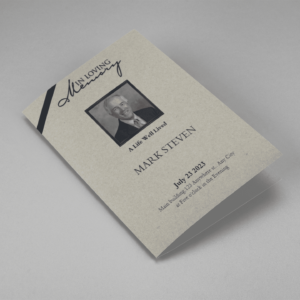Creating an obituary is a heartfelt way to honor the life of a departed loved one. It serves as a tribute, celebrating their accomplishments, character, and the impact they had on others. Crafting an obituary may seem daunting, but with the right guidance, it can be a meaningful and cathartic process.
Understand the Purpose of an Obituary
Before diving into the process of creating an obituary, it’s essential to understand its purpose. An obituary serves as a formal announcement of someone’s passing, providing essential details such as their name, date of birth, date of passing, and information about their life and achievements. It also serves as a way to notify the community about funeral arrangements and memorial services.
Gather Essential Information
Start by gathering all the necessary information you’ll need to include in the obituary. This typically includes:
-
- Full name of the deceased
- Date and place of birth
- Date and place of passing
- Information about immediate family members (spouse, children, parents, siblings)
- Educational background
- Career highlights and accomplishments
- Hobbies, interests, and passions
- Details about the funeral or memorial service
Choose the Right Tone and Style
The tone and style of the obituary should reflect the personality and life of the deceased. Some obituaries are formal and traditional, while others are more informal and personal. Consider the preferences of the deceased and their family when deciding on the tone and style.
Write a Compelling Narrative
Begin by writing a compelling narrative that captures the essence of the deceased’s life. Start with a brief introduction that includes their full name, date of birth, and date of passing. Then, delve into the details of their life, highlighting significant milestones, achievements, and cherished memories.
Include Personal Anecdotes and Memories
Personal anecdotes and memories can bring the obituary to life and provide readers with a deeper understanding of the deceased’s personality and character. Consider including stories shared by family members, friends, and colleagues that showcase the impact the deceased had on others.
Edit and Revise
Once you’ve written the obituary, take the time to edit and revise it carefully. Check for any grammatical errors, typos, or inconsistencies in the information. Consider asking a trusted friend or family member to review the obituary and provide feedback before finalizing it.
Consider Adding a Photo
Including a photo of the deceased can personalize the obituary and help readers connect with the individual being honored. Choose a photo that captures their personality and spirit, whether it’s a formal portrait or a candid snapshot.
Publish and Share
Once the obituary is complete, it’s time to publish and share it with the community. You can submit it to local newspapers, online obituary websites, and social media platforms to ensure that friends, family members, and acquaintances are informed of the passing and invited to pay their respects.
Template For Obituary
Using templates for obituaries can simplify the process of creating a meaningful tribute. Templates provide a structure and format that can guide you through the writing process, ensuring that you include all the essential information while also allowing for personalization. They can help you organize your thoughts, choose the right tone and style, and create a cohesive narrative. Whether you’re looking for a traditional format or a more modern design, there are plenty of obituary templates available that you can customize to suit your needs. By using an obituary template, you can honor your loved one’s life and legacy with ease.























































